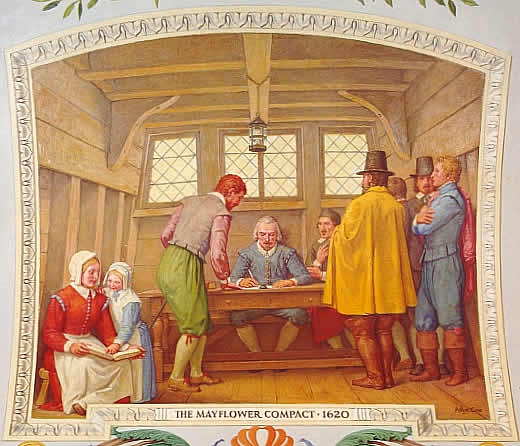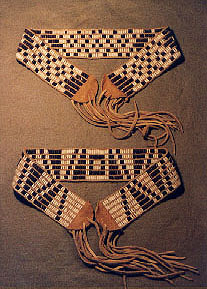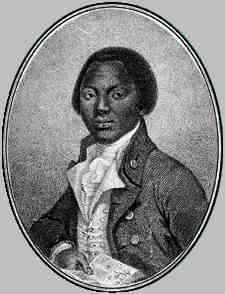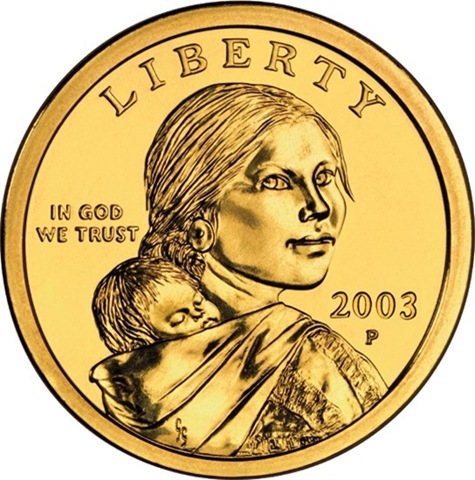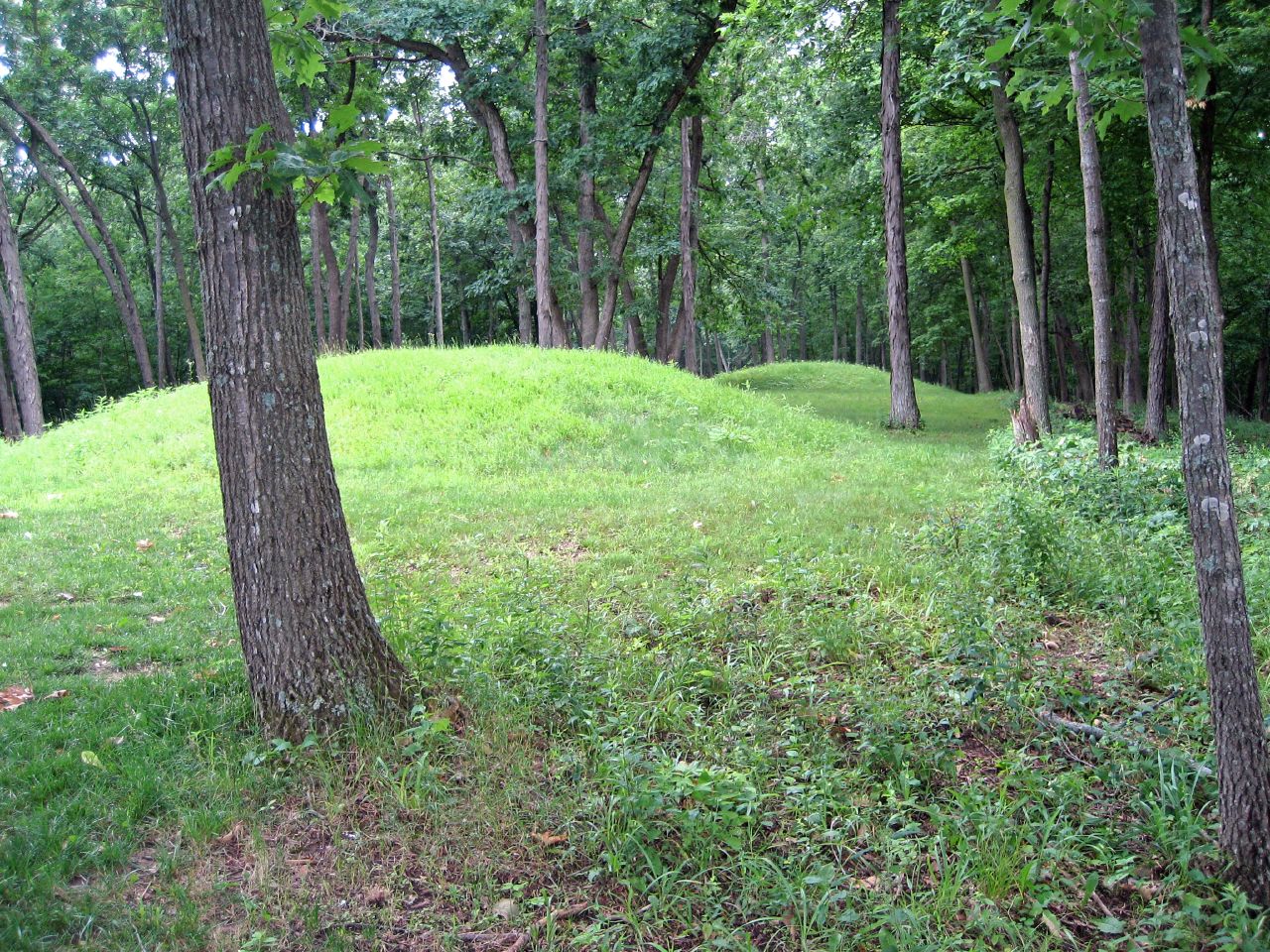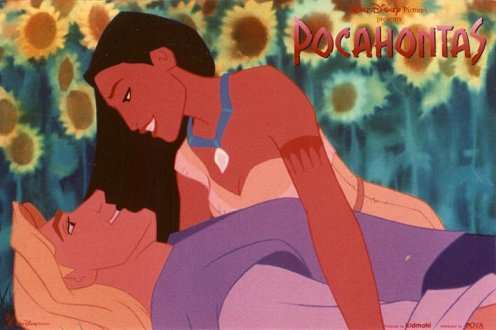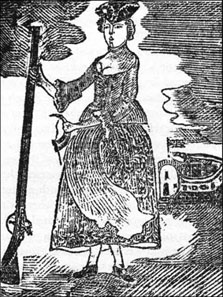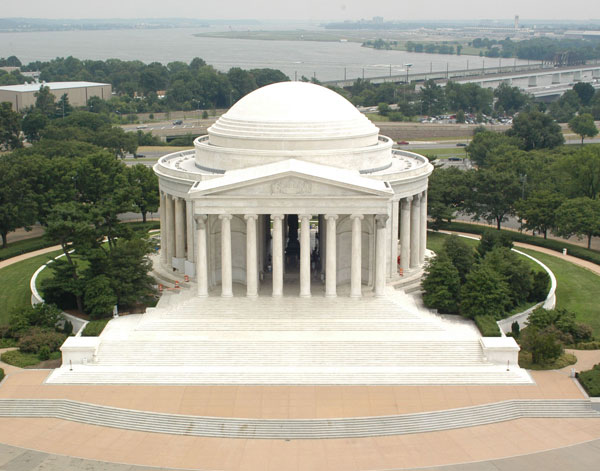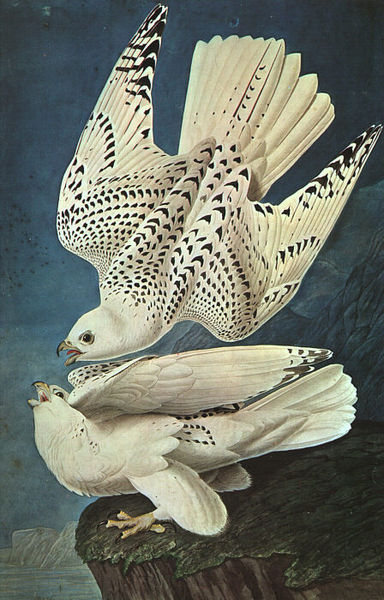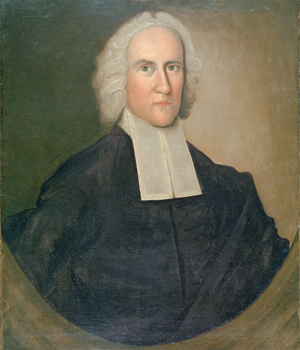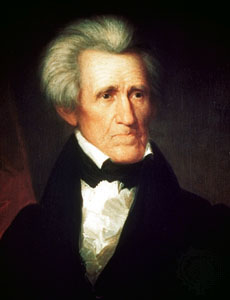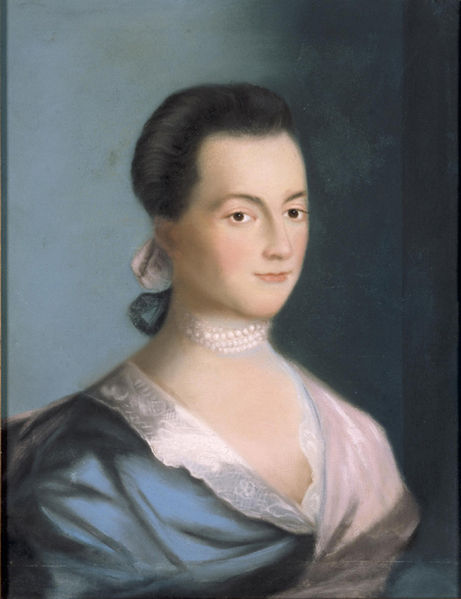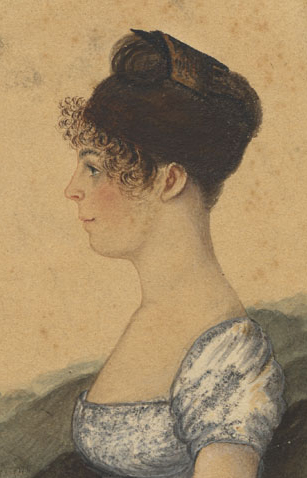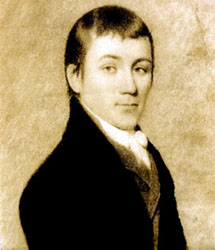|
|
Homepage / Syllabus, Spring 2016
undergraduate companion course:
LITR 4328 American Renaissance
|
|
|
Instructor: Craig White Office: Bayou 2529-8 Office Hours: 4-7 Monday, 4-7 Tuesday, & by appointment Phone: 281 283 3380 Email: whitec@uhcl.edu
Attendance
policy:
|
research plan & 2
research posts
(30-40%)
midterm
(20-30%)
final exam
(25-35%) |
Reading & Presentation Schedule, spring 2016
No Required Textbooks—all texts online
![]()
|
Monday, 25 January 2016: course introduction Instructor presents: Enlightenment & The Federalist Papers, #1 & #10 Anne Bradstreet, "In Reference to her Children" + 17th Century / Baroque Purposes of literature: mimesis; entertainment and instruction |
Agenda: textbooks? syllabus, daily windows; periods semester assignments, model assignments; presentations ID forms + presentation requests (continue next week) [break] Why do we read literature of the past? What reactions? periods; Renaissance, next week's assignments: Origin Stories Objectives > obj. 4: which America do we teach? todays texts: Enlightenment / Federalist + 17th Century / Bradstreet |
|
Sacagawea, 1788-1812
|
Discussion Questions: 1. Why do we read literature of the past? What reactions do we have? What learn or gain? 2. Which America do we learn or teach? Dominant culture / Western Civilization, or Multicultural? 3. What advantages to each? What pressures to teach either?
|
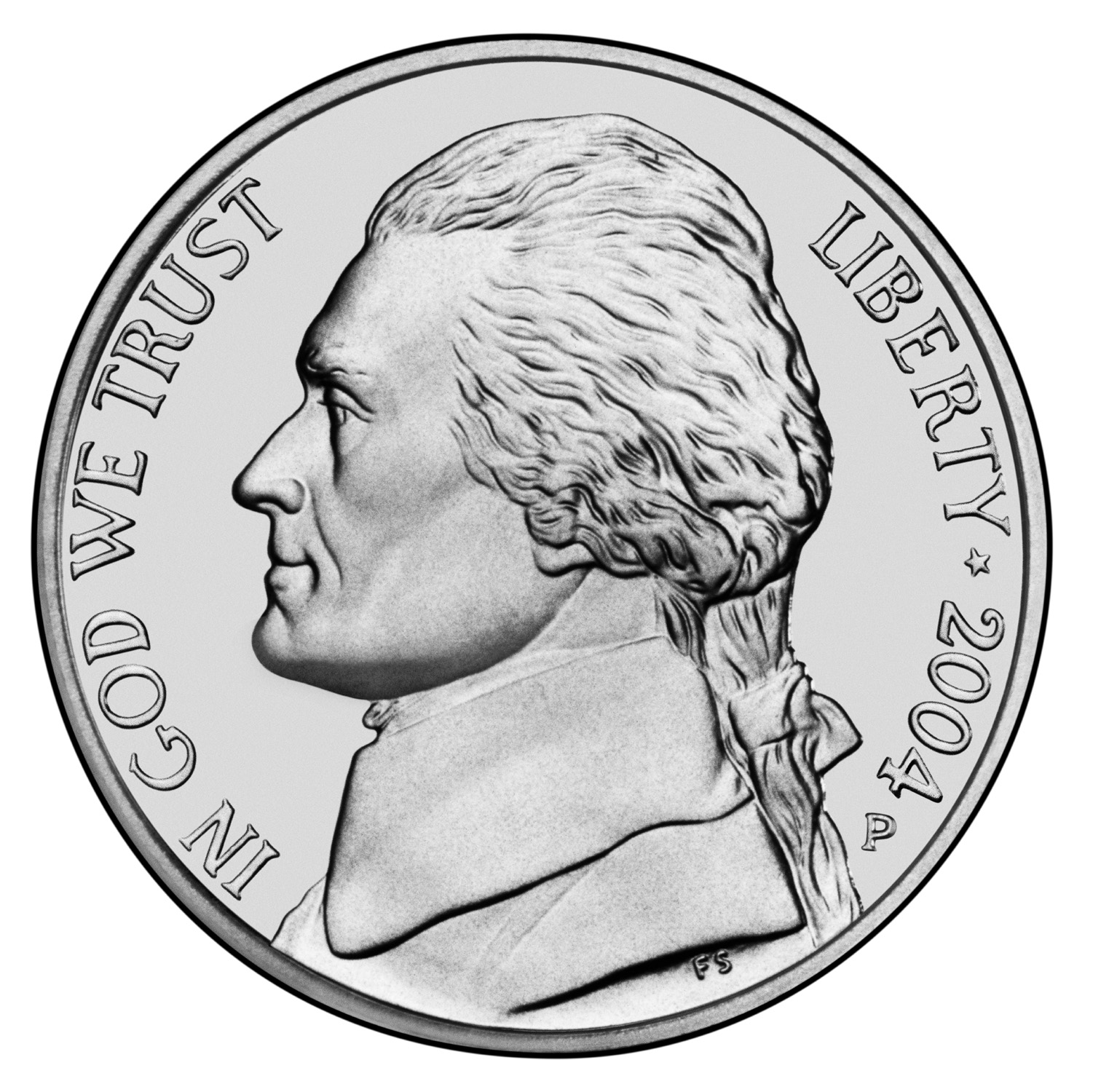 Jefferson Nickel 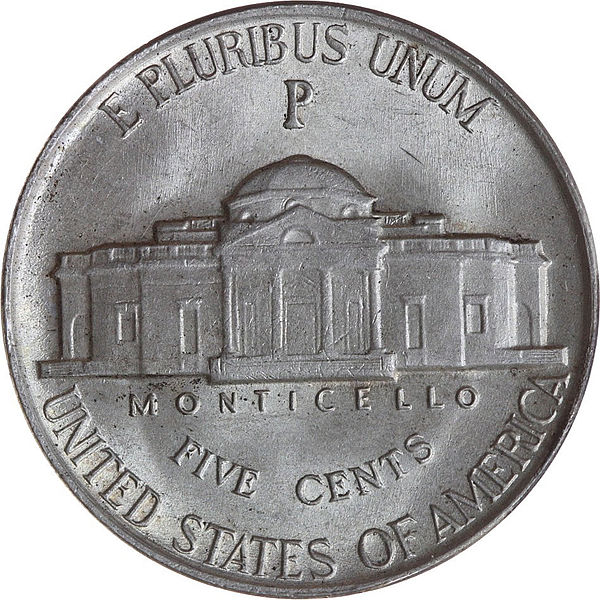 Monticello |
![]()
early European Exploration and Settlement; First Contact with American Indians
|
|
|
![]()
|
Monday, 1 February 2016: Creation & Origin Stories of Europe, America, Africa Readings: Genesis (Creation Story from Bible) & Columbus's Letters (re discovery of America) American Indian Origin Stories Student Presentations Reading Discussion Leader(s): Burgundy Anderson Poem: Simon J. Ortiz, "A New Story"; Poetry Reader: Melissa Holesovsky Web Review: Native American music Web Reviewer: Nathan Mesloh Instructor presents Declaration of Independence; Narrative of Olaudah Equiano, the African; Virgin of Guadalupe as Origin Stories terms : origins, intertextuality, syncretism; spoken-written literature; wampum; Art = imitation of reality; to entertain & instruct |
Agenda: office hours, presentation assignments (& forms); roll, First assignment 16-21 February: research post topics proposal creation / origin stories & objectives 1 & 2 reading discussion: Burgundy Columbus, Genesis, & Handsome Lake: intertextuality / dialogue poetry: Melissa [break] web review: Nathan > pleasure as identity, defamiliarization? next week's assignments research posts; maps other creation stories . . . |
|
|
Discussion Questions: 1. How is each creation / origin story unique to its culture? How does an origin story create a culture? What symbols, gender roles, ethics or morality, relations of humanity and divinity? 2. Or, how do today's creation / origin stories resemble each other? If they do resemble each other, is it because of cultural contact or universal human nature? 3. What literary qualities or pleasures do you find in these texts? What balance of instruction and entertainment? 4. What resemblances b/w Columbus & Genesis? With Handsome Lake? If they resemble or reflect each other, what are possible reasons? (Intertextuality) 4a. More directly, how much does Columbus appear to have rediscovered or re-entered the Garden of Eden? 5. What assumptions does Columbus make about the Indians, their land and resources relative to the Europeans, their empires, and desires? How do Columbus's attitudes still reflect those of America's dominant culture toward Native American Indians? 6. About "Creation Stories," what advantages to one story vs. many stories? 7. Which America do we teach? A "nation of many nations," or "one nation under God?" |
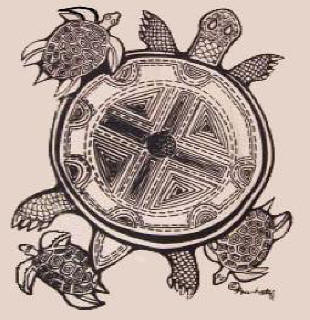 Turtle Island |
![]()
|
Monday, 8 February 2016: Early Explorers terms: Renaissance, La Malinche, Mestizo Readings: John Smith (1580-1631), from A General History of Virginia (1624) Cabeza de Vaca (1488-1588), selections from La Relacion (1542) Reading Discussion Leader(s): Mariah Kelly Poem: Sor Juana Inez de Cruz (1651-95), "You Men" Poetry Reader: Kasey Akin Web review: syncretism (obj. 6) & Virgin of Guadalupe origin story Web Reviewer: Instructor Web Review: European Renaissance music Web Reviewer: Instructor |
Agenda: obj. 4 Renaissance research posts, midterm, obj. 2 origin stories; obj. 3; schedule; preview Puritans as dominant culture; question re obj. 3 John Smith & Pocahontas: Mariah Kelly Sor Juana: Kasey Akin [break] origin story > captivity narrative Cabeza de Vaca: reading experience? origin stories > Virgin of Guadalupe origin story > Mestizo; Richard Rodriguez Renaissance > Renaissance music: instructor |
|
|
Discussion Questions: 1. How do today's reading assignments matter to us here and now? (historicism) 2. What kind of pleasure can be found in these readings? Information and learning, or escape and engagement? 3. How are the stories by Smith and Cabeza de Vaca like or unlike fiction (which won't appear for about 200 more years)? 4. What different attitudes toward racial or ethnic mixing emerge from North America and Latin America? Term: Mestizo. 5. Since Cabeza de Vaca's story takes place in the Gulf Coast region (including Galveston and San Antonio), how do you see this area differently through that time and his eyes? 6. What picture emerges of the American Indians, and how does it comply or conflict with legends regarding this area's Indians? Added question: How does the story of John Smith (and its various legends) make an early model of the USA's dominant culture? How may Cabeza de Vaca (and possibly Sor Juana) represent or model a multicultural North America? |
 |
Reformation & Counter-Reformation; Religion as War & Exaltation
|
|
|
|
Monday, 15 February 2016: Puritan utopias (1st generation Puritan settlement of New England) Readings: the 17th Century; The Puritans in New England (and England); New England Bradford, Of Plymouth Plantation (i.e., "the Pilgrims"; selections) John Winthrop (1587-1649), A Model of Christian Charity (Boston Puritans; excerpts) Anne Bradstreet (1612-72), poems term(s): utopia, literary & historical utopias, America's utopian pasts Student Presentations Reading Discussion Leader(s): instructor; Haley Stilwell (1-2 Bradstreet poems) Poetry Reader Web Review: Baroque music Web Reviewer: Melissa Holesovsky |
Agenda: research topic(s) proposal; course structure critical thinking, dialectic 17th Century, plain style > Baroque & Baroque music: Melissa Anne Bradstreet: Haley [break] Puritans; utopia + grad seminar (communitarian) Bradford / Winthrop: dominant culture / multiculturalism community / individualism; spiritual / material next week [Bradford as poet] . .
|
|
Stained Glass of Anne Bradstreet |
Discussion Questions: 1. How do the Puritans (with John Smith & Virginia) represent an early model of the USA's dominant culture? How do their relations with American Indians represent or model the relationship between the USA's dominant and minority cultures? 1a. How does the pop-culture resonance of "the first Thanksgiving" with Pilgrims and Indians compare with the populariity of the John Smith-Pocahontas story? 1a. What glimpses do Puritan texts offer of American Indians, and what can we learn of both the Indians and their relations with European settlers? How do the Pilgrims'' perceptions of Native Americans conform to or differ from later attitudes? The Pilgrims tell a story of God's plan or story for them, but how do the Indians fit into that plan, or how do you see glimpses of more than one story? 2. How do the Puritans express attitudes that preview constitutional democracy, describe or imagine utopias or perfect worlds, or stand for "traditional family values," or the idea that America was founded by "Godly men?" 2a. How may New England still represent a "utopian community" in American thought or culture? What's changed? 2b. What problems or challenges do the Puritans present to modern America? 3. As lyric poems, Bradstreet's writings appear "timeless." But how do they reach across the centuries? To what do they connect? What parts don't connect? What combinations of family and religious identity make her appealing to popular as well as critical or historical audiences? |
 John Winthrop (1587-1649) |
![]()
Research Post topic(s) proposal due 16-21 February
![]()
|
Monday, 22 February 2016: Puritan Captivity Narrative (2nd generation of Puritans) Readings: Mary Rowlandson , A Narrative of the Captivity and Restoration (1682) introduction + chs. 1-3 of Narrative of the Life of Mrs. Mary Jemison (1725) Cotton Mather, The Wonders of the Invisible World (1693) terms: captivity narrative; Iroquois Confederacy; romance Student Presentations Reading Discussion Leader(s): Andrea Esquivel (Rowlandson); Tom Britt (Jemison) Reading Discussion Leader(s): Jackie Rodriguez (Mather) + Web Review: Salem Witch Trials |
Agenda: research proposals how to read literature before it was literature; dialectic; plain style; dominant culture & multiculture; color code; gothic captivity narrative > Mary Jemison: Tom (Albert) Mary Rowlandson: Andrea (sick > instructor) [break] literacy and American Indian speech and writing midterm; research posts > Salem Witch Trials > The Witch Mather / Salem: Jackie
|
|
|
Discussion Questions: 1. Rowlandson, b. 1637, is part of the Puritans' second generation in America, with Mather third generation. (Jonathan Edwards [25 Feb] will be 4th generation.) How do their situations and attitudes differ from first, "utopian" generation of the Puritan immigrants? How do they struggle to "measure up" to the heroic first generation? (Compare immigrant narrative?) 2. See objective 6 re "biblical narratives" as an interpretation of American history. How does Rowlandson interpret both her experience and the Indians' in terms of a Christian allegory or world-vision? 3. Rowlandson writes the first "captivity narrative"—a popular genre in American literature. What are its attractions? Rowlandson's text was remarkably popular in its day. How does it resemble what we would now consider popular literature that people might enjoy reading? How does it anticipate fiction or the romance? How do Rowlandson's stylings anticipate "the gothic," esp. descriptions of Indians and the wilderness? 4. How do Rowlandson's stylings of Indians correspond to our stylings of terrorists? Even though Rowlandson writes from a dominant-culture perspective, what multicultural glimpses do we get of American Indian culture and the Indians' own struggles in the face of social upheaval? What is their story compared to the dominant-cultural story of righteous conquest? 5. As a woman writer, how do Rowlandson's and Jemison's concerns and style compare to Anne Bradstreet? What are the opportunities for women's writing in early and later New England? (It's easy to criticize the Puritans as sexists, but they were much more encouraging of women's literacy than most early colonial communities, if only so women could read the Bible and learn to obey.) 6. Mather (1663-1728) and the Salem Witch Trials occur in Puritans' third generation—what has changed for God's chosen people in America? Why do we remember the Salem Witch Trials and little else about the Puritans? If we don't believe in witchcraft then or now, what's going on in this trial? Why do Americans want to believe in witches, when they might better wonder why religious superstition was used to murder 20 innocent people and damage countless more? |
 Cotton Mather (1663-1728) |
![]()
The
Enlightenment or Age of Reason
&
the
Scientific Revolution
(late
1600s-late 1700s)
Transition from the 1600s to 1700s, from Religion / Revelation to Enlightenment / Reason
|
Jefferson Memorial, Washington D.C. |
John James Audubon (1785-1851) |
^examples of Neo-Classical or Enlightenment art^
|
Monday, 29 February 2016: Last Puritan and First Founder Jonathan Edwards, Sinners in the Hands of an Angry God; Personal Narrative; Note on Sarah Pierpont; "Of the Rainbow" & "Of Insects" Benjamin Franklin, Remarks on the Savages of America; from the Autobiography, proverbs / aphorisms Reading Discussion Leader(s): Eric Howell Web review: Seventeenth Century (1600s); Baroque; Enlightenment, Deism (Franklin Autobio 19, 32), The Greak Awakening; irony Web Reviewer: instructor Web review: remaining chapters of Narrative of Life of Mrs. Mary Jemison (1725) Web Reviewer: Albert Salazar |
Agenda: Professor Longhair; research post (research, organization, grading), midterm schedule Religion & Literature; The Great Awakening & other terms Edwards & Franklin: reader: Eric Mary Jemison: Albert Early American literature: formal or historical? periods; dominant & multi-culture; fiction; gothic & "the other" assignments |
|
|
Discussion Questions: Above all, compare and contrast Franklin and Edwards, born 3 years apart but on different paths in writing styles and subjects; also public profile & sense of American community. 1. Which author or text seems most "literary" to present standards? What implications to your choice? 2. Edwards: How is Edwards "the Last Puritan?" What has changed? How does he follow earlier Puritan generations? 3. Why is "Sinners in the Hands of an Angry God" the "most famous sermon ever?" Why do readers remember it? Why does it matter now, whether we share its religion or not? How do Edwards's Personal Narrative & note on Sarah Pierrepont show a different side to religion? 4. Identify elements of the gothic and sublime. (Compare to Rowlandson's Captivity Narrative?) 5. Franklin: In contrast to Edwards as "the Last Puritan," how does Franklin represent the new Enlightenment generation that founds the USA? What aspects of Franklin are more or less attractive or admirable? How does his use of irony and humor allow him to criticize a sensitive subject like religion? 6. How do the religious postures or attitudes of Edwards and Franklin combine to constitute the USA's continuing status quo of "religious people, secular government?" |
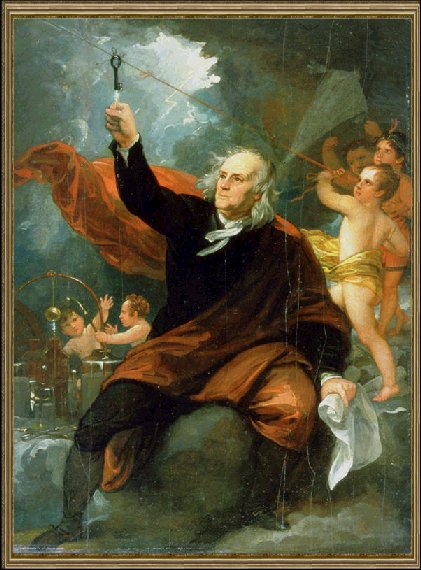 Benjamin Franklin (1706-90), contributor to both the Declaration of Independence & the U.S. Constitution, here conducting experiment w/ lightning / electricity |
|
Monday, 7 March 2016: Enlightenment and Religion Readings: Thomas Jefferson, writings on religious freedom Thomas Paine, from The Age of Reason, from The Crisis, & from Common Sense Biographical information on Thomas Paine Abigail & John Adams on Dr. Franklin Reading Discussion Leader(s): Tom Britt Poem: Jupiter Hammon, "An Evening Thought: Salvation by Christ, with Penitential Cries" (1760) ; Poetry Reader: Instructor Web review: The Enlightenment; Deism; The Great Awakening; Religion & Literature Web Reviewer: instructor Web review: Adam Smith, from The Wealth of Nations (1776) Web Reviewer: Eric Howell |
Agenda: last week: dialectic: way to wealth or salvation? (obj. 3) research posts, & assignments; writing more, not less midterm (start with #3) Discussion: Tom Britt [break]
post-midterm assignments Adam Smith: Eric Howell poem: instructor (obj. 3, 4, 5) |
|
|
Overall question: If what we're reading this week and after the midterm is "literature," how does that change or challenge what most of us love and enjoy as literature? What do we gain or lose by expanding the category or definition of literature? Since these selections concern "religion and politics," what are the risks and gains of reading and discussing? Discussion Questions: 1. Compare / contrast Enlightenment writings on religion with Sinners in the Hands of an Angry God. 2. What's at stake in the debate over the Founders' religion? How does this debate count as a Creation / Origin Story for the USA in 2016? Consider values, heroes, traditions, change, gender roles. 3. What is the Enlightenment style? What are its attractions and detractions, its virtues and shortcomings? (Irony?) 4. The eighteenth century (1700s) or the Enlightenment is most Literature students' least favorite period of study, yet its literature and history establish the political and economic institutions we continue to live by: science, capitalism, public works, human rights, limited government, separation of church and state. What does this conflict between usefulness and entertainment tell us about literary study and what counts as literature? 5. As in previous class, what model of religion is developing in the USA so that religion remains alive without becoming oppressive or limiting? |
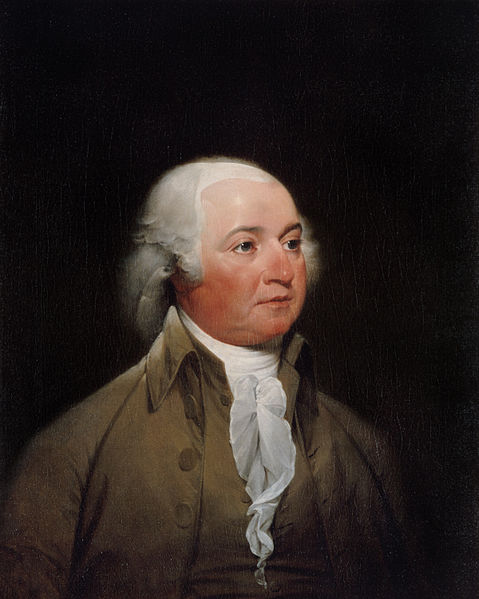 John Adams (1735-1826): 2nd President USA; portrait by Jn Trumbull 1792 |
![]()
Monday, 14 March 2016: no meeting—Spring Break Holidays
![]()
Monday,
21 March
2016:
official date for midterm
exam, in-class or email;
![]() no class meeting—attendance not required;
instructor keeps office hours.
no class meeting—attendance not required;
instructor keeps office hours.
![]() email submissions
window: 7 March-22 March 11:59pm
email submissions
window: 7 March-22 March 11:59pm
![]()
|
Monday, 28 March 2016: Constitutional Government Readings: review Mayflower Compact & A Model of Christian Charity (15 Feb) The Great Law of Peace (Iroquois / Haudenosaunee); The Cherokee Memorials The Declaration of Independence (and its echoes) + Texas Declaration of Independence U.S. Constitution, Articles of Confederation, Instructor Presentation: selections from The Federalist Papers (students welcome to read but not required) Reading Discussion Leader(s): instructor Web review: The Trail of Tears Web Reviewer: Kimberly Loza |
Agenda: schedule; research posts; final exam; midterm Discussion questions, texts: instructor [break] assignments Great Law of Peace; Cherokee Memorials > Trail of Tears: Kimberly Loza |
|
|
Rationale for class on constitutions: Recent scholarship expands the definition of "literature" from creative writing (fiction, poetry, drama) to "extraliterary" texts including historical documents. What are the attractions and complications of such an expansion? What audiences or constituents does it serve? How does it change the "English Major" or "Literature Major?"—or the teaching of literature and language in public schools? Discussion Questions: 1. What upsides / downsides to reading legal or historical texts as literature? 2. What parts of texts come alive for literary interests and why? Which parts did you skim or ignore, and why? 3. Using process of elimination, if today's texts don't count as literature, what does? How do such questions and analyses help us define literature or extend our definition of literature? As teachers of literature, what are we teaching our students to do? If we should teach historical and legal documents, how can we do so successfully? If we don't, how do we justify teaching the texts that we do teach? 4. Compare the social and religious communities Seventeenth Century represented by the Mayflower Compact & A Model of Christian Charity with the Enlightenment social contracts described by The Declaration of Independence and the U.S. Constitution. How are the religious documents more "literary" than the Enlightenment documents? 5. As with zealously religious people who never read the Bible, many of the most avowedly patriotic Americans never read the Declaration or Constitution, even while claiming that these sources support their biases and ideologies. Instead they learn about the Bible from preachers or about the Constitution from family or office conversations or "hate radio." What happens when fundamentalists actually read their sacred texts for themselves? 6. How to avoid extreme reactions of apathy or rebellion? Readers of government documents often respond fatalistically with "so what?", avoiding controversy. Correspondingly, any effort to read critically can identify one as a silly radical fighting the tide of history or disrespecting the past. 7. If education and literacy are essential for democratic self-government, will aging white voters support education for children who don't look like them? Or will white population continue "white flight" to suburbs, heartland interior (Idaho), Bible academies, home schooling? 8. How do we regard the Founders (or Founding Fathers)? Are they superhuman thinkers, writers, and "statesmen" instead of politicians? Or are they slave-holding racists who ignored women's rights and broke off from England because they didn't want to pay taxes for their own defense? |
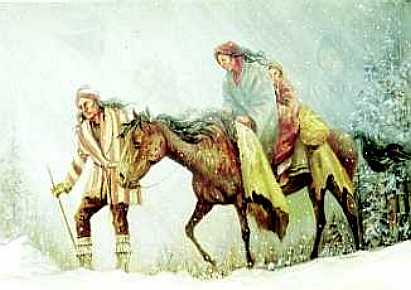 Trail of Tears |
![]()
|
Monday, 4 April 2016: Who's in and out of the Enlightenment State? (transition to Romanticism) John Woolman, selections from The Journal (1753, 1762) on The Quaker Page Olaudah Equiano, The Interesting Narrative . . . (1789; first slave narrative) (African American) Samson Occom, A Short Narrative of my Life (1768) (American Indian) Abigail & John Adams's letters on America's new government Reading Discussion Leader(s): Mike Bradshaw (Equiano) Poem: Phillis Wheatley, "On Being Brought From Africa to America" Poetry Reader: Krysinda Gregory / Michelle Liaw Poem: Phillis Wheatley, "On Imagination" Poetry Reader: Instructor Instructor presents: The Quaker Page |
Agenda: [copy poems] midterms, posts, finals, semester review Founders religion > politics? > literacy + question of universal humanity Equiano: Mike Wheatley, "Africa to America": Michelle [break] Occom: instructor Periods: Enlightenment & Romanticism; assignments > Romanticism / fiction: the Adams letters Wheatley: instructor Quakers & Woolman: instructor |
|
|
Overall Discussion Question: Continuing "which America to teach," what is gained or lost by reading "outsiders" to the nation's founding and its dominant culture? What literary power or prestige is gained? What do we learn about North American culture, both good and bad? (e.g., a history of exclusion and oppression still with us today, but also ideals and mechanisms for equality and progress?). How may attention to "outsiders" be a feature or value of Romanticism? 1. In both Equiano and Occom, note connections between religion and literacy (and literacy as a prerequisite for enlightened self-government—see Texas Declaration, para. 11). If religion is no longer part of the government (or the economics of capitalism), where does religion relocate and assert its power? 2. How does Equiano's writing in both style and content offer an African American voice and yet resemble the Founders and the Enlightenment? What qualities reconnect to the religious appeals of the Puritans or of evangelical culture? 3. Equiano shows slavery as horrifying, but in contrast to most later, Romantic slave narratives, he mostly advocates its reform rather than its abolition. How is this attitude representative of Enlightenment thinking? Contrast Romanticism. 4. Americans who feel defensive about slavery often point to the existence of slavery in Africa. What similairites and differences between traditional African slavery and modern American slavery? 5. Why do most Literature majors like reading works such as those by Equiano or Occom more than texts by the Founders? How do their lives or writings anticipate Romanticism? 6. Reading Woolman's Journal is like reading the life of a saint. What pleasures or rewards? What benefits and risks of reading moral or pious literature in public schools? What kinds of moral quandaries does Woolman face that prevent simple yes-no moralism? [43] How does Woolman differ from the Enlightenment? In what ways is he a potentially a Romantic figure, or not? |
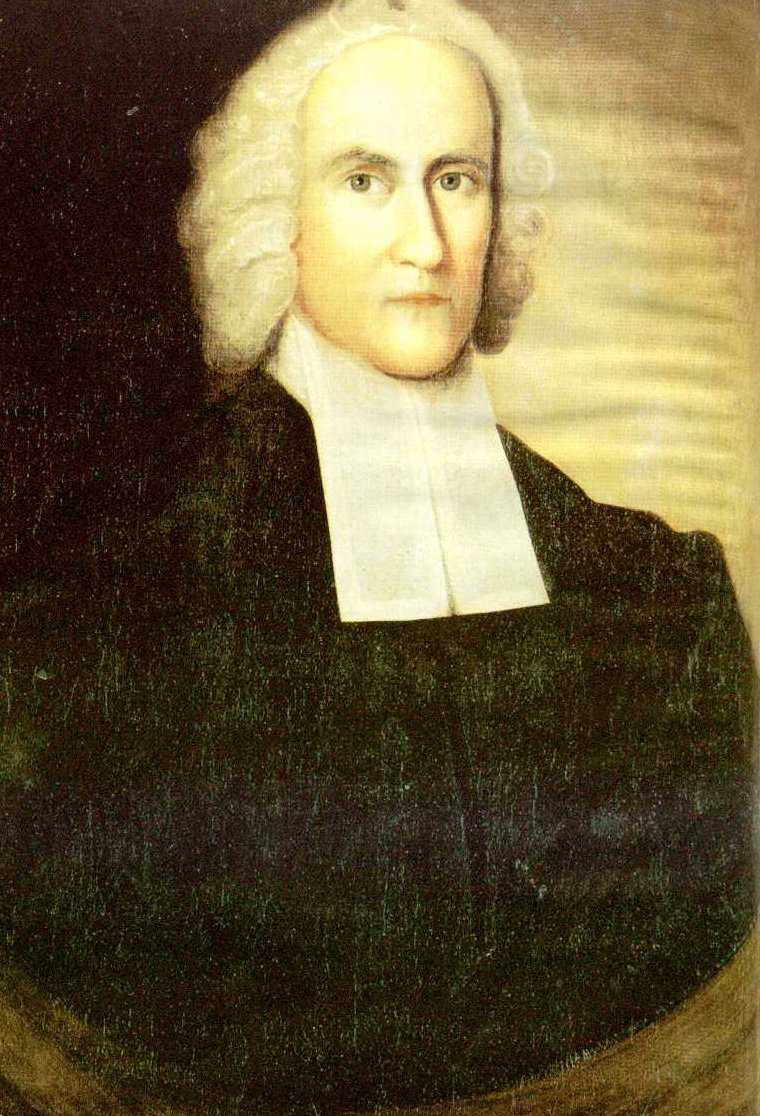 Jonathan Edwards |
![]()
Second Research Post Due 5-7 April
![]()
Early Romantic Era (late 1700s-early 1800s)
17th Century
> Enlightenment > Romanticism
|
Monday, 11 April 2016: Peace, Change, Great Awakenings + begin Women's Romance Readings: Crevecoeur, Letters from an American Farmer (1782) Letters & journals of Abigail and John Adams on Benjamin Franklin Charlotte Temple (read most of Volume One) Student Presentations Reading Discussion Leader(s):
|
Agenda: 2nd research post, final exam purpose of literature: Entertain & Instruct objective 4: Enlightenment / Romanticism early Romanticism: Woolman, Crevecoeur, Great Awakening, Whitefield > 2nd Great Awakening classical classical music: Austin Enlightenment Architecture) [break] schedule, assignments Charlotte Temple: nature of fiction; final exam |
|
|
Overall question: How are thought, literature, and religion turning from the Enlightenment to Romanticism? Crevecoeur: How does Crevecoeur describe "the American" as a new identity created by the Melting Pot? What contrasts to other cultures? Relate to American Exceptionalism.
Charlotte Temple: What balance is struck between "instruction" and "entertainment?"
How does Charlotte's action of leaving her family parallel the USA's Declaration of Independence? Since the Founders and the Enlightenment virtually excluded women, how do Romanticism and fiction involve women in literature? What is the nature of fiction, and how does Charlotte Temple fulfill the style or appeal of a novel? Whitefield: After the Constitution's separation of church and state, where does religion matter? What about Whitefield's sermons is potentially Romantic or contrary to Romanticism? What features of popular evangelical Christianity are familiar even today? John Adams: How is "southern preaching" representative of the Great Awakening? What religious values of New England does Adams pose in opposition to those of the Southern USA? |
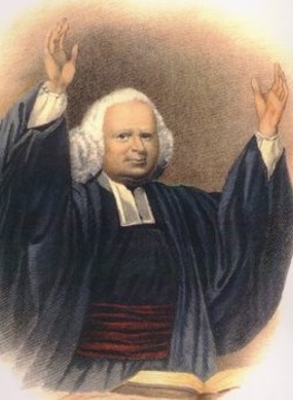 George Whitefield (1714-70) |
![]()
|
Monday, 18 April 2016: complete women's romance (Class meeting canceled b/c of rain) Readings: Charlotte Temple (complete); historical information on Susanna Rowson & Charlotte Temple Thomas Jefferson, letter on women's education & novels begin Edgar Huntly (chapter 1); term: gothic; novel; fiction; defamiliarization Student Presentations Reading Discussion Leader(s): Shanna Farmer (Charlotte Temple) > 25 April All students have a passage from anywhere in Charlotte Temple for question, comment.
Web review: Enlightenment / Romantic visual art Web Reviewer: Burgundy Anderson > 25 April |
Agenda: Enlightenment & Romanticism: review Jefferson; instruct & entertain conclude Charlotte Temple (1791): discussion: Shanna student comments [break] Romantic art: Burgundy Romantic music: Nona gothic > Edgar Huntly |
|
|
Class Assignment: All students have a passage from anywhere in Charlotte Temple for question, comment. Discussion Questions: 1. For past generations of college students, Charlotte Temple would likely have been excluded from a Literature course on account of its sentimentality and its appeal to popular rather than critical tastes. What is gained from reading such a novel in terms of women's writing, the romance genre, cultural studies, popular culture, early American history? 2. By reading an early work of fiction like Charlotte Temple, what do you learn about the style of fiction you take for granted now? 3. How is Charlotte Temple like a telenovela, a soap opera, a chick flick, or other current genres of popular literature? 4. Compare / contrast Charlotte Temple as a sentimental romance novel with Edgar Huntly as a gothic romance novel. Continue questions on Charlotte Temple from previous class: What balance is struck between "instruction" and "entertainment?"
How does Charlotte's action of leaving her family parallel the USA's Declaration of Independence? Since the Founders and the Enlightenment virtually excluded women, how do Romanticism and fiction involve women in literature? What is the nature of fiction, and how does Charlotte Temple fulfill the style or appeal of a novel? |
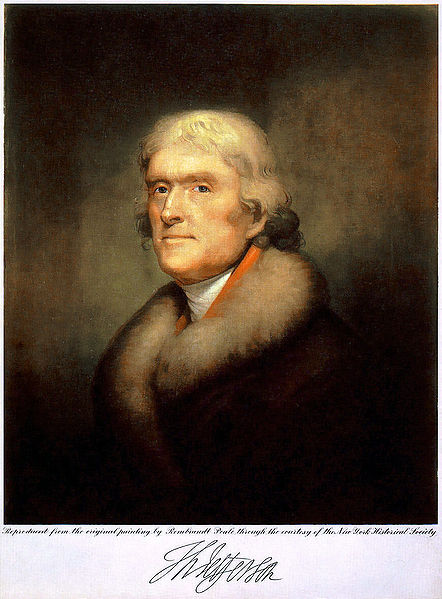 |
![]()
|
Monday, 25 April 2016: Edgar Huntly Readings: Edgar Huntly through chapter 12 Reading Discussion Leader(s): Austin Green > 2 May
Web review:
Life & Career of Charles Brockden
Brown Web Reviewer:
Instructor
Web review: T terms: instruction and entertainment; mimesis; |
Agenda: research posts Romanticism and fiction, novel conclude Charlotte Temple: Shanna [break] final exam; assignments Brown biography > intertextuality the gothic; Freneau |
|
|
Discussion Questions: 1. Edgar Huntly was never popular like Charlotte Temple. Why not? How does Edgar Huntly seem more like "classic literature" than Charlotte Temple? What distinctions between popular and classic literature? What balance is struck between "instruction" and "entertainment?" 2. How can both be classified as Romantic (or occasionally anti-Romantic)? 3. Examples of the gothic and sublime in Edgar Huntly? How and why is American gothic attached to the wilderness rather than gothic castles, etc.? What is the significance of the gothic? Why does it keep returning? How does it keep working? 4. Edgar Huntly is the first serious American attempt at serious or literary fiction. What does the author get right and wrong? What can you learn about fiction from these successes and errors, or from early attempts at fiction generally? What do you want more or less of? 5. What is the overall effect on a reader from reading Edgar Huntly? How does this effect or purpose differ from that of previous texts in Early American Literature? |
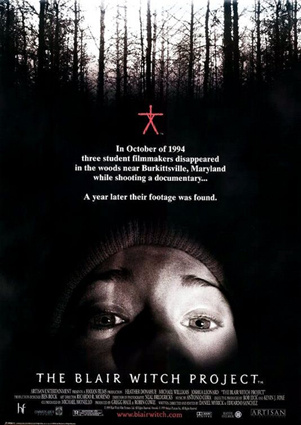 wilderness gothic |
![]()
|
Monday, 2 May 2016: conclude Charles Brockden Brown, Edgar Huntly Readings: Edgar Huntly (complete) All students have a passage from anywhere in Edgar Huntly for question, comment in relation to a discussion question above or below. Student Presentations: Reading Discussion Leader(s): Austin Green Poem: Freneau, "The Indian Burying-Ground" Poetry Reader: Mike Bradshaw |
Agenda: religion and Romanticism Poem: Mike final exam; models [break + evaluations] Edgar Huntly: student comments exit |
|
|
All students have a passage from anywhere in Edgar Huntly for question, comment in relation to a discussion question above or below. Discussion Questions: Ask any questions regarding expectations for Final Exam Assignment. 1. Does Edgar Huntly come to any satisfying end or resolution? What balance of instruction and entertainment? Since this is a book you never would have read if you hadn't taken this course, can its study be rationalized or justified? 2. Examples of Romanticism, esp. the gothic and sublime? How or why is the gothic attached to the American wilderness rather than gothic castles, etc.?What significance to the gothic? Why does it keep returning? How does it keep working? What about us responds to the gothic? How does the gothic respond to the Enlightenment?
2a. More on the
gothic: How may Edgar & Clithero qualify as
doppelgangers
or twins? Examples of such twinning elsewhere in
gothic literature? (e.g. Poe, the Brontes, Frankenstein)
3. Edgar Huntly was never popular like Charlotte Temple. Why not? What distinctions between classic & popular literature? 3a. Edgar Huntly is the first serious American attempt at "literary fiction"—written not just to sell copies or teach a lesson but to extend and influence the evolution of imaginative content and literary style. What does the novel get right and wrong? What can you learn about fiction from his successes and errors? What do you want more or less of? 4. A captivity narrative makes part of the novel's action, only now it's fiction. Compare Mary Rowlandson or Mary Jemison. 5. How may Edgar Huntly maintain interest as an example of modern or even Modernist literature? Consider its interest in the unconscious mind (e.g., somnambulism or sleep-walking; gothic as unconscious nightmare-life; also 27.41, 27.47) and the unreliable narrator. |
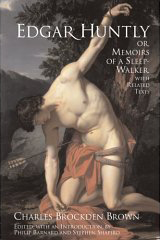 |
![]()
Monday, 9 May 2016: Final Exam Assignment — email anytime after class on Monday 2 May; deadline 11:59pm Tuesday 10 May.
![]()
Course Objectives
Content
1. To learn about early North American and U.S.texts and cultures and make them matter now. (Historicism)
2. To read Early American Literature as an origin story about the beginnings and evolution of North American culture and literature.
"Creation Stories" and "Origin Stories" available in course:
![]() Native American
origin stories
Native American
origin stories
![]() The Pilgrim or
Puritan Fathers (& Mothers) of
New England
The Pilgrim or
Puritan Fathers (& Mothers) of
New England
![]() Founding Fathers (& Mothers)
Founding Fathers (& Mothers)
![]() African American slave narratives
African American slave narratives
![]() Hispanic, Latino/a,
Mestizo, or Mexican-American:
the Virgin of Guadalupe
& La Relacion
of Cabeza de Vaca
Hispanic, Latino/a,
Mestizo, or Mexican-American:
the Virgin of Guadalupe
& La Relacion
of Cabeza de Vaca
![]() Genesis and Evolution
Genesis and Evolution
To explore related concepts of progress, utopia, decline, and apocalypse (or end-times)
3. To reconcile the "Culture Wars" over which America is the real America? Which America to teach?—Dominant culture and / or multicultural?
![]() Which America to teach?
Which America to teach?
-
"Founding" by "great white fathers" (dominant culture) and / or multicultural voices of African America, Native America, Spanish and French colonies, women, and others? (pluralism)
-
To acknowledge “heroes, villains, and victims” as symbols necessary for a good story but also recognize cross-cultural, intertextual, evolutionary, and other narrative dynamics.
-
In brief, can the interaction and exchange of different American peoples be seen and told as evolutionary progress, or must it be seen and told as an apocalyptic showdown between self & other or us & them? Is America in decline or making progress?
![]() "American
Exceptionalism": Is America a religious nation peculiarly blessed by God or
a secular state with people of various beliefs devoted to material progress?
"American
Exceptionalism": Is America a religious nation peculiarly blessed by God or
a secular state with people of various beliefs devoted to material progress?
![]() Is American government a strong, centralized national
state or union commanding the world, or is it an isolationist confederation of state and local governments with
prevailing rights?
Is American government a strong, centralized national
state or union commanding the world, or is it an isolationist confederation of state and local governments with
prevailing rights?
![]() Can there be
a community of individuals? A nation of many nations?
Can there be
a community of individuals? A nation of many nations?
![]() Political Correctness: Language always evolves to match or
control the realities it describes, but such change is not always
comfortable.
Political Correctness: Language always evolves to match or
control the realities it describes, but such change is not always
comfortable.
-
Liberal political correctness: continual evolution of diplomatic language to respect differences, with threats of preachiness and over-sensitivity.
-
Conservative political correctness: code of silence on disruptive identities, though sometimes acknowledged by innuendo or symbolism.
![]() To
ask hard questions without simple or
final answers by using
dialectic discussion methods. (Answers
evolve with changing world.)
To
ask hard questions without simple or
final answers by using
dialectic discussion methods. (Answers
evolve with changing world.)
4. To gain literary and cultural knowledge of historical periods & attempt trans-historical unity.
![]() Renaissance / Age of Exploration
(1500s)
Renaissance / Age of Exploration
(1500s)
![]() Seventeenth Century:
Religious Reformation and Warfare
(1600s)
Seventeenth Century:
Religious Reformation and Warfare
(1600s)
![]() Enlightenment, Age of Reason
(late 1600s-late 1700s)
Enlightenment, Age of Reason
(late 1600s-late 1700s)
![]() Romanticism (late 1700s-1800s)
(continues in LITR 4328 American Renaissance,
fall 2016)
Romanticism (late 1700s-1800s)
(continues in LITR 4328 American Renaissance,
fall 2016)
![]() Can these periods align to produce a
linear narrative of literary progress, if only one that approaches our own
modern standards? What is won and lost by the evolution of one period into
another?
Can these periods align to produce a
linear narrative of literary progress, if only one that approaches our own
modern standards? What is won and lost by the evolution of one period into
another?
![]() How does the function of literature change or evolve from
public legend, myth, or constitution to personal or private fiction or intimate
lyric poetry?
How does the function of literature change or evolve from
public legend, myth, or constitution to personal or private fiction or intimate
lyric poetry?
![]() How does “Literature” as we know
it today evolve from earlier genres like letters, pamphlets, public documents;
spoken and written literatures and
cultures
How does “Literature” as we know
it today evolve from earlier genres like letters, pamphlets, public documents;
spoken and written literatures and
cultures
5. Can American literary and cultural history tell a single story?
Options:
![]() Development of a distinctly "American Literature" as a national
tradition expressing a unique national character of individualism, mobility,
alienation or triumphalism, etc. (Contrast
trans-Atlantic or
multicultural literature.)
Development of a distinctly "American Literature" as a national
tradition expressing a unique national character of individualism, mobility,
alienation or triumphalism, etc. (Contrast
trans-Atlantic or
multicultural literature.)
![]() Providential
history: from "fate / destiny" to Biblical narratives, incl. models for secular story-telling
Providential
history: from "fate / destiny" to Biblical narratives, incl. models for secular story-telling
![]() Evolution as continuity + change
Evolution as continuity + change
![]() the
romance narrative of quest or
journey as progress or decline
the
romance narrative of quest or
journey as progress or decline
![]() Ongoing transition:
tradition > modernity [>
+ religious or cultural reaction of
retrenchment & revival]
Ongoing transition:
tradition > modernity [>
+ religious or cultural reaction of
retrenchment & revival]
Cross-cultural strategies
![]() Mestizo identity
Mestizo identity
![]() Multiculturalism and associated terms
Multiculturalism and associated terms
6. Critical Theory / Critical Thinking
Close reading or formalism: attention to language and its mechanisms
Textuality & Intertextuality—not reading “one text at a time” but how texts create a network of shared meaning
Death of the Author: empowering readers, opposing autobiographical interpretations and "what the author meant to say"
Historicism: reading past literature in its historical context and ours
![]() What aspects of the past do we relate to and why?
If we don't relate, what can we learn from difference?
What aspects of the past do we relate to and why?
If we don't relate, what can we learn from difference?
![]() What is historical and what is
timeless? If “timeless,” what is the connection between them and us?
What is historical and what is
timeless? If “timeless,” what is the connection between them and us?
![]() How can we think of the past? What
are mental powers of storytelling and limits to inclusion?
How can we think of the past? What
are mental powers of storytelling and limits to inclusion?
![]() “History in their own words”—and
not, say, in the language of a modern textbook
“History in their own words”—and
not, say, in the language of a modern textbook
![]() American Studies: the
interdisciplinary study of American identity and culture in literature,
history, religion, gender studies, and economics, whether dominant-culture
or multicultural.
American Studies: the
interdisciplinary study of American identity and culture in literature,
history, religion, gender studies, and economics, whether dominant-culture
or multicultural.
![]() People may exploit the past to
exploit people who know nothing of the past and have to believe what they
hear.
People may exploit the past to
exploit people who know nothing of the past and have to believe what they
hear.
Critical thinking:
![]() unity &
diversity, identity and difference: How to tell a continuous story about America that involves “other
Americas?”
unity &
diversity, identity and difference: How to tell a continuous story about America that involves “other
Americas?”
![]() succession and progression: is America
in decline, in progress, or just
evolving?
succession and progression: is America
in decline, in progress, or just
evolving?
![]() resistance to
conspiracy theory while recognizing its
attractions.
resistance to
conspiracy theory while recognizing its
attractions.
Teaching
Class Organization
![]() Course webpage as evolving teaching
tool
Course webpage as evolving teaching
tool
![]() online texts for a
face-to-face classroom
online texts for a
face-to-face classroom
![]() Student-led discussions
Student-led discussions
![]() Model Assignments for
peer-instruction
Model Assignments for
peer-instruction
Attitudes
![]() Build on what students already know (or may recognize or relate to)
Build on what students already know (or may recognize or relate to)
![]() Emphasis less on what to think than on how to think and
discuss, plus familiarity with a subject's terms of discussion
Emphasis less on what to think than on how to think and
discuss, plus familiarity with a subject's terms of discussion
![]() Research posts as knowledge gathering +
exams as opinion and analysis
Research posts as knowledge gathering +
exams as opinion and analysis
![]() Begin inclusion of Meso-America,
Spanish colonization, and Hispanic / Mexican identities
Begin inclusion of Meso-America,
Spanish colonization, and Hispanic / Mexican identities
(webpages for later inclusion)
Review of Latino Catholicism: Transformation in America’s Largest Church (2012) by Timothy Matovina
Annie Murphy Paul,
“Reading Literature Makes Us Smarter and Nicer”

North America
